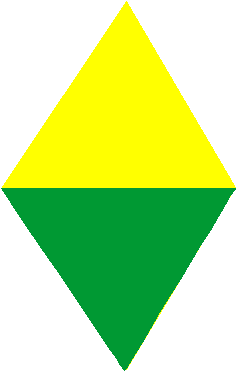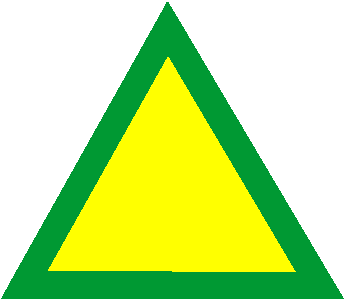
South African Formations of the Second World War
by Steve Rothwell
In September 1939, the South African Army
numbered 3,353 regulars. These were supplemented by 14,631 men of the Active Citizen Force (ACF) which gave peace time training to volunteers and in time of war would form the main body of the army. Pre-war plans did not anticipate that the army would fight outside southern Africa and it was trained and equipped for bush warfare. Changes were initiated after the Italian conquest of Abyssinia in 1936 and the 27 battalions of the ACF were organised into nine brigade groups. The brigade group was the basic South African field formation capable of independent operations. Mirroring contemporary British practice, each brigade of three infantry battalions was allocated its own artillery, engineers and other ancillary arms.However South Africa’s military aspired to greater things and in late September 1939, the Chief of Staff, Sir Pierre van Ryneveld, proposed the formation of a Mobile Field Force, made up of two infantry divisions (each of three infantry brigades), a mounted brigade and an armoured regiment. Together with supporting artillery and coastal defence forces, the requirement was for 140,000 men. Although not formally accepted, the proposal set the pattern for subsequent mobilisation and force structure.
Manpower
The proposal also highlighted a failing which was to plague South African planning throughout the war. There were simply not enough men to fill out the planned formations. Out of a total population of 2,400,000 whites, the available pool of men aged between 20 and 40 was around 320,000. The declaration of war on Germany had the support of only a narrow majority in the South African parliament and was far from universally popular. Indeed, there was a significant minority actively opposed to the war and under these conditions conscription was never an option. The expansion of the army and its deployment overseas depended entirely on volunteers.Given the country’s attitudes to race, it is not surprising that the enlistment of fighting troops from the much larger black population was hardly considered. Instead, in an attempt to free up as many whites as possible for the fighting and technical arms, a number of corps were formed to provided drivers and pioneers, drawn from the more acceptable Cape Coloured and Indian populations. These were eventually amalgamated into the Cape Corps. A Native Military Corps, manned by blacks, was also formed for pioneer and labouring tasks. For some of their tasks, individuals were armed, mainly for self-protection and guard duties, but they were never allowed to participate in actual combat against Europeans.
Mobilisation and Early DeploymentsUp until the spring of 1940 (South African Army 1939-40 by David A Ryan), the army trained with little prospect of action. In March, following a British request, General Jan Smuts, the South African Prime Minister, promised an infantry brigade to reinforce Kenya against the Italians in East Africa. This impending foreign deployment, to be completed by July, was outside the scope of the existing oath taken by the Army’s volunteers and on 29 March, officers and men were invited to take a new oath for service anywhere in Africa.
On 11 May 1940, 1 Infantry Brigade was mobilised, followed by eight brigades during the summer. South Africa declared war on Italy on 11 June and 1 Brigade deployed to Kenya in July. 1 Infantry Division formed on 13 August and, with 2 and 5 Brigades, joined 1 Brigade during October and November. The South Africans distinguished themselves during the highly successful East African campaign which followed. The country also provided the majority of engineers and other technical troops and by April 1941 had 31,560 troops in East Africa. One disappointment was that 1 Division did not fight with all three South African brigades under command, 1 Brigade serving with both 11 and 12 African Divisions, its place taken by 25 East African Brigade.
| 1 SA Infantry Div | 2 SA Infantry Div | 3 SA Infantry Div | 6 SA Armoured Div |
In May 1941, 1 Division was sent to Egypt and was soon joined by 2 Division. 2 and 3 Divisions had formed in South Africa in October and November 1940, but 3 Division remained at home as a drafting formation, supplying replacements to the two divisions ‘up North’.
The North African Cauldron
South African formations, organised and equipped along British lines, met with mixed fortunes in the North African campaign. In its first operation, during Operation Crusader, 5 Brigade was destroyed on 23 November 1941, at Sidi Rezegh. The commander of 1 Brigade, Brig Dan Pienaar, operated cautiously for the remainder of the operation, reluctant to incur additional high losses. 2 Brigade was detached to 8 Army throughout, forming the garrison of the Matruh fortress, while 2 Division, lacking motor transport, was in reserve. The South Africans were understandably concerned that their divisions should fight as whole formations and for the Gazala battles the brigades fought under command of their respective divisions. But further disaster awaited the luckless South Africans. On 21 June 1942, 2 Division, with 4 and 6 Brigades under command, surrendered at the fall of Tobruk.
1 Division, with 1, 2 and 3 Brigades under command, was able to get away relatively intact and fought well in the defensive battles following 8 Army’s retreat into Egypt. The cautious Pienaar, now commander of 1 Division and increasingly reluctant to risk his troops, lost the confidence of his British commanders. It was felt, a little unfairly, that his division now lacked the necessary aggressiveness and drive for offensive operations. However the division played an important part in the victory at El Alamein.
Manpower Problems and Service in Italy
From the time of their arrival in North Africa, it had been the Army’s ambition to convert the two divisions to armoured formations, but the necessary equipment had been lacking. Victory in North Africa gave an opportunity to resurrect these plans but there were two problems to overcome. The first, as ever, was manpower. Although 3 Division had despatched 7 Motorised Brigade to garrison Madagascar between June and December 1942, the division could not be sustained, let alone converted to armour in place of the lost 2 Division. It was decided to withdraw 1 Division to South Africa at the end of 1942 and to replace it with an armoured division. But what of the second problem, with the closure of the campaign in North Africa, where was the new division to fight?
|
Order
Today!: The Day of Battle: The War in Sicily and Italy 1943-44 |
During this time, a number of formations were organised, but most disappeared quickly for lack of men. Eventually 6 Armoured Division began forming in South Africa in February 1943, and moved to Egypt in April, where it equipped and trained for nearly a year. A further armoured division, 1 Armoured, was planned but was reduced to a brigade and remained in South Africa, acting as a feeder for 6 Division. Manpower problems continued to beset 6 Division, the shortages compounded by the reluctance of some to serve outside Africa and of some veterans to serve again, but during the summer of 1943, infantry shortfalls were overcome by merging regiments. Like some marriages, the mergers retained the names of both parties, resulting in titles such as the First City/Cape Town Highlanders Regiment and the Imperial Light Horse/Kimberley Regiment. By late 1943, there were 40,00 South Africans in the Middle East.
Early in 1943, a new oath was instigated for service outside Africa and 6 Division and a number of engineer units were offered to the British for service in Italy. The British willingly accepted the engineers but were at first reluctant to accept the division as the real need was for more infantry. The potential of the division could not be overlooked for ever and it finally disembarked at Taranto in April 1944. British experience in Italy showed that armoured divisions, with one armoured and one infantry brigade, were too light in infantry. Independent infantry brigades were attached to their divisions and to 6 SA Armoured, the British 24 Guards Infantry Brigade joining the division’s 11 Armoured and 12 Motorised Brigades in May. The brigade group remained key to the British and South African concept of fighting and by now divisional integrity was respected. So too was the need for all arms to operate together and it was common for the infantry battalions to operate with the division’s tanks under command, after the fashion of the German Kampfgruppe or the American task force.
Initially attached to 8 Army, 6 Division fought with 5 US Army from August 1944 until the war’s end. The division faced a constant struggle for replacements, alleviated by the loan of additional British troops and, ironically for the race-conscious South Africans, an Indian infantry battalion, 4/13 Frontier Force Rifles. In February, general infantry shortages forced the removal of the Guards brigade to reconstitute the British 56 Infantry Division but the South Africans improvised 13 Motorised Brigade in its place. Despite the shortages, 6 Division acquitted itself well throughout the campaign but it is questionable whether enough men could have been found to keep it in being if the war had lasted longer.
South Africa made a significant contribution to the British Commonwealth war effort, especially in the early years as the British struggled to mobilise. As for the Army, of the 132,194 men who volunteered for full time service by the war’s end, nearly 3400 were killed, 7,236 wounded and 12,271 missing and POW.
Sources:
Ellis, J. The Sharp End of War, David & Charles (1980)
Joslen, HF. Orders of Battle, Second World War 1939-1945, reprinted by the London Stamp Exchange (1990)
Martin, HJ and Orpen, N. South Africa at War, Purnell, Cape Town (1979)
Orpen, N. East African and Abyssinian Campaigns, Purnell, Cape Town (1968)
Orpen, N. The War in the Desert, Purnell, Cape Town (1971)
Orpen, N. Victory in Italy, Purnell, Cape Town (1975)
Perry, FW. The Commonwealth Armies, Manpower and Organisation in Two World Wars, Manchester UP (1988)
Pitt, B. The Crucible of War, Jonathan Cape (1980)
A Short History of the South African Army by Richard Allport
South African Army 1939-40 by David A Ryan



